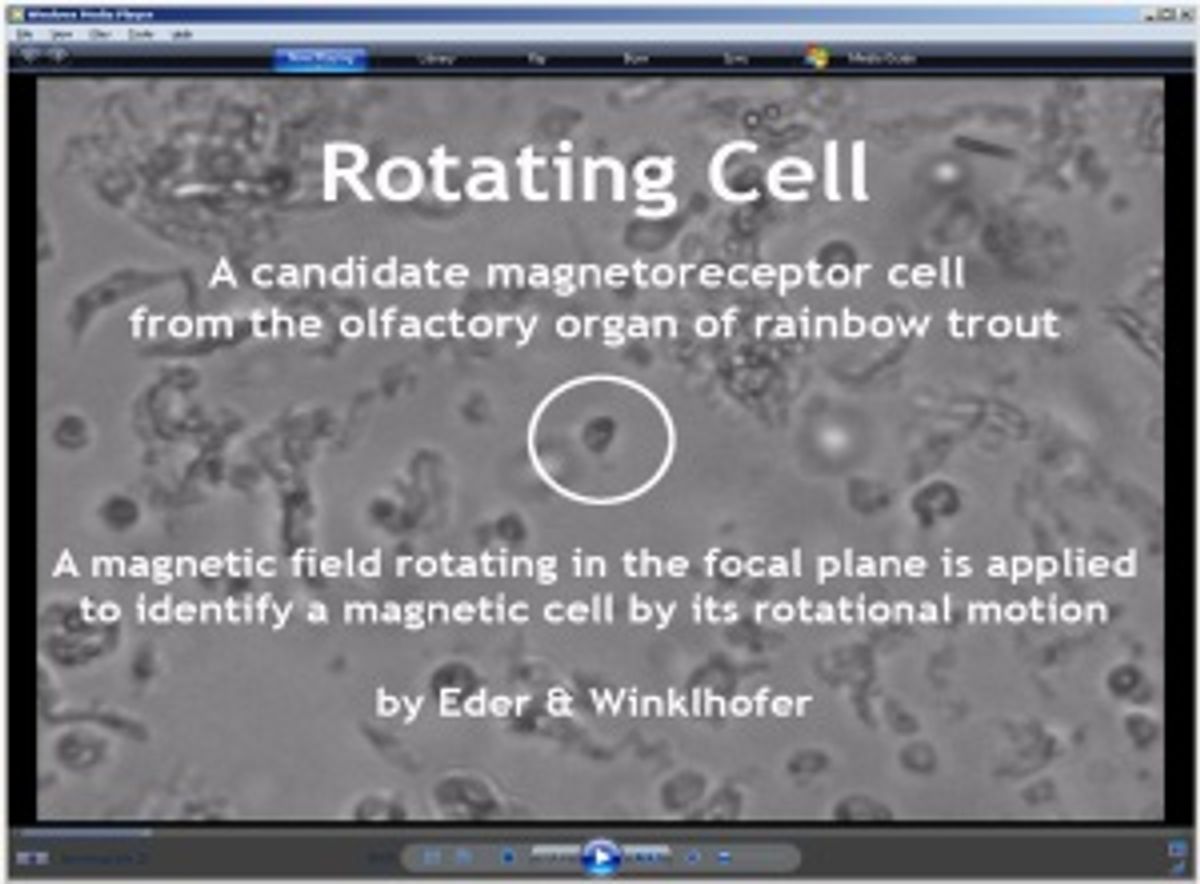During the past half-century, it’s become increasingly clear that some animals have built-in magnetic compasses. The evidence has suggested that some cells contain magnetite particles, but it has been difficult to tell a magnetic particle from run-of-the-mill non-magnetic biological iron compounds. And how the particles might transmit magnetic field information to the nervous system was also a mystery.
Now researchers at Ludwig Maximilians University Munich (LMU) report in Proceedings of the National Academy of Science that they have developed a method for isolating magnetic cells (which turn out to be very rare) and measuring their sensitivity.
The LMU group focused on trout, which (like their close cousins, salmon) have notable navigational talents. Earlier experiments had found iron particles in the trout’s olfactory nerves, as well as in the lateral line (the long stretch of motion-sensing nerves down the fish’s side), the inner ear, and even the cornea. These tissues were thus prime candidates in the search for the biological compass. (Theory suggests that these ‘magnetoreceptors’ should be widely distributed about the body to counter localized electromagnetic noise.)
The researchers started at the trout's nose, removing olfactory nerve clusters and dissolving the biological glue holding the tissue together. They then examined the resulting 10 000-odd dissociated cells under a microscope in a rotating magnetic field. A very small number—just one to four cells per animal—rotated in synchrony with the surrounding field. (Here's the video.)
The phase-lock is significant: it indicates not only that the particles are definitely magnetic, but also that they are tightly bound to the cell membrane (and not, say, loosely suspended inside and transmitting torque to the rest of the cell through viscous drag). That means that external magnetic fields could produce shear stress in the cell and (probably) send nerve signals to the brain.
The phase-lock also gives researchers a tool for measuring the cell’s dipole moment. The scientists increased the field’s rotational frequency until the synchronous rotation broke down: dipole moment is a direct function of this boundary frequency.
The magnitude of the dipole moments came as a surprise. They are about one to two orders of magnitude larger than previous experiments suggested—ranging from 4 to 100 fAm2—and are clearly consistent with a discernible signal to the animal.
The paper’s senior author, geophysicist Michael Winklhofer, says that the researchers plan to search for similar magnetic sensing cells in other vertebrates, “particularly in migratory bird species and homing pigeons.”
Mammals, he says, would also be interesting to study. “If the cells are indeed a basic type of magnetoreceptor conserved across the vertebrates, it would explain why cattle and deer get disoriented in the vicinity of power lines.” (These ruminants tend to line up north-south when resting or grazing; high-tension lines disturb this behavior.)
Even if there does turn out to be a widespread animal sensitivity to magnetic fields, Winklhofer is by no means an alarmist. “There is no reason to panic all…. Power lines can be designed in such a way that the effective magnetic field produced decays rapidly from the line. Eventually our engineers will come up with ‘close-to-zero-emission’ lines.”
Video: M. Winklhofer/Ludwig Maximilians University Munich
Douglas McCormick is a freelance science writer and recovering entrepreneur. He has been chief editor of Nature Biotechnology, Pharmaceutical Technology, and Biotechniques.




